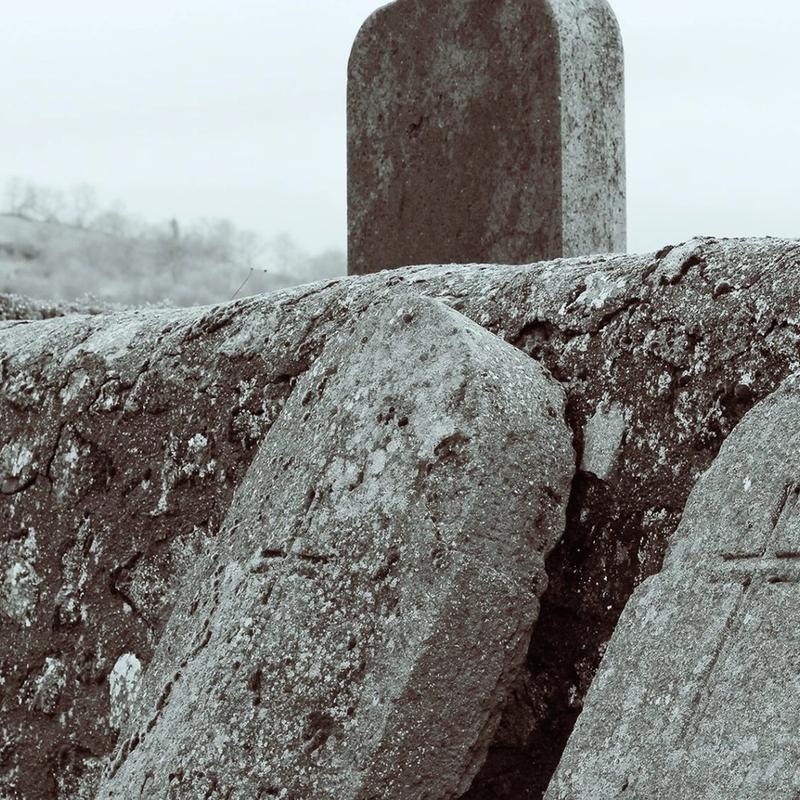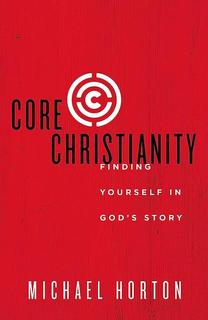America likes winners, not losers; triumph, not tragedy. Friedrich Nietzsche and Ted Turner have argued that Christianity is for losers, but pop Christianity in America has been trying desperately to convince everybody that this just isn’t the case. Become a Christian and you’ll be unfailingly happy, upbeat, in charge, with health, wealth and happiness; self-esteem, victory over debt and bad marriages and families. Meanwhile, we put our elderly, the terminally ill, those caught in the cycle of poverty, and others who remind us of our mortality where we can’t see them or at least where our lives do not ordinarily intersect when we do not intend them to.
We aren’t morbid when we take sin, suffering, and death seriously as Christians. Rather, we can face these tough realities head-on because we know that they have been decisively confronted by our captain. They have not lost their power to harm, but they have lost their power to destroy us. The hope of the gospel gives us the freedom to expose the wound of our human condition because it provides the cure. We see this in John’s remarkable retelling of the story of Lazarus’s resurrection (John 11:1-45).
The Death of a Loved One
Lazarus, along with his sisters, was a close friend of Jesus, we learn especially from verses 1-16 [of John chapter 11]. I’ve walked that short distance between Bethany and Jerusalem in roughly an hour. Jesus was entreated to come to his ill friend’s side when Mary identified him to Jesus as “he whom you love”(v. 2). The assumption here is that Jesus and Lazarus are so close that all Jesus needed was an announcement of his condition. Surely Jesus would come running.
Their plea for Jesus was not wrong, but short-sighted in its motivation. They were appealing to him for the healing of Lazarus, while Jesus anticipates using his friend’s death as an opportunity to signify his person and work. Mary and Martha knew that Jesus could heal their failing brother, and simply assumed that, given his love for Lazarus, Jesus would want to.
Here we return to that conundrum: Is God both sovereign (able to heal) and good (willing to heal)? If the healing doesn’t occur, one of those affirmations comes into question, we reason. If Jesus really loves Lazarus, he’ll come quickly. “God, if you really care about me __________ “-fill in your own blank. In the thick of trouble, this is not so bad a response. In fact, it is a sign of faith on their part: God can and will heal. Rather, the problem is in the timing and the terms.
Jesus deliberately delays his return to Bethany two more days. What could have been happening in the sisters’ minds during these two agonizing days? They had no idea that Jesus was going to do something far greater than they had asked him to do. With the wisdom and data at their disposal, they could only have been utterly depressed at the apparent lack of response on Jesus’ part.
Nobody-the disciples, Lazarus, Mary, or Martha, nobody but Jesus, knew why Jesus had allowed Lazarus to die in the first place, especially if all along he was going to visit him eventually. It was all palpably confusing to their experience. It simply did not make sense.
Jesus’ cryptic remark, “for your sake I am glad that I was not there, so that you may believe,”could not be discerned this side of the events in Bethany. It could only be clear to them after the completion of the episode, not within it. This is a crucial point for our own application in such circumstances. From their perspective, in terms of their own experience, the sisters (and Lazarus in his final hours) and the disciples would have logically concluded that Jesus, whom they had seen as perfectly capable of healing, was simply callous. Their experience was not irrational or illogical, but rather incomplete and so inadequate to sit in judgment upon God’s ways. Just as the disciples could not recognize what God was going to do through the cross, nobody could understand why Jesus had allowed his friend to die.
Lazarus had to die in order for the greater miracle to occur. There is something more important than the healing of his friend. Jesus knew the great work that he would accomplish in the power of the Spirit when he came finally to Bethany.
The Confrontation with His Loved Ones
Martha’s faith in Jesus is unfailing. He can still turn things around-even after her brother’s entombment: “Even now . . .”(v. 22). It is important to see how Martha here reflects that combination of heart-wrenching disappointment and faith that we find in the Psalms. She does not believe that even death has the last say in the presence of Jesus, which is thus far more faith than we have seen in the disciples.
Jesus replies, “Your brother will rise again”(v. 23). “Do you believe this?”Jesus presses her to commit herself not just to the theological question of resurrection of the dead, but to him as the Resurrection and the Life! To claim to be “the Resurrection and the Life,”as “the Way, the Truth and the Life,”is to claim nothing less than equality with the Father. So now the stakes of Martha’s confession are raised considerably. In the presence of witnesses, she is called not only to confess that Jesus can raise the dead-as Elijah had done. Jesus calls upon her to acknowledge that he is himself the God upon whom Elijah called. He not only can give life; he is Life. That is a very large step. One of the marvelous clauses here is, “though he may die”(v. 25). It is one thing to halt the processes of decay and death, quite another to bring someone back to life. Jesus declares of himself, “I am the resurrection and the life. Whoever believes in me, though he die, yet shall he live, and everyone who lives and believes in me shall never die. Do you believe this?”(v. 26).
Now Jesus is not simply asking Martha to confess that Lazarus will live, but that those who trust in Jesus Christ-even though they die, will be raised to never die again. It’s no longer about Lazarus per se. Jesus is calling Martha into the circle of that cosmic trial between Yahweh and the serpent, calling her to be a witness (the Greek word for witness being the same for “martyr”). Lazarus’ resurrection will be a sign-proof, in fact-of that reality to be inaugurated with Christ’s own Resurrection from the dead. Even though people will still die despite the arrival of Messiah, they will not remain dead forever but will be raised in the likeness not of Lazarus’ mortal body, still tending toward death, but in the likeness of Christ’s glorified body.
We recall that many centuries earlier, in the midst of his agony, Job cried out, “I know that my Redeemer lives and that in this flesh I shall behold God”(Job 19:25). And on the witness stand Martha, racked with myriad thoughts and feelings of desperation and hope, brought Job’s exclamation up-to-date: “She said to him, ‘Yes, Lord; I believe that you are the Christ, the Son of God, who is coming into the world’”(v. 27). That is the big event in Bethany this day. Without discounting the resurrection of Lazarus still to come in the story, we cannot forget that, as with all of Jesus’ miracles, the most amazing thing is the reality that the sign merely announces and the confession that it draws from our lips. This is the faith that perseveres through the countervening evidence of his experience. And it is Martha’s as well. They do not know why God has allowed this or that temptation, trial, disaster, or pain, but the confession is the main thing: “Yes, Lord; I believe that you are the Christ, the Son of God, who is coming into the world.”
Living in denial of tragedy, too many Christians live schizophrenic spiritual lives: outwardly smiling and brimming with trust and joy, but inwardly filled with doubts and anger. They often do not know where to turn, but Martha, like Job and the psalmist, says, “To God, of course.”Bring him your doubts, frustration, and even anger. He can handle it. Remember the cross and God-forsakenness of the Beloved: God, too, knows how to sing the blues.
It is in verses 33-35 that we capture a glimpse of what the writer to the Hebrews meant when he said that Jesus was made like us in every respect:
Since then we have a great high priest who has passed through the heavens, Jesus, the Son of God, let us hold fast our confession. For we do not have a high priest who is unable to sympathize with our weaknesses, but one who in every respect has been tempted as we are, yet without sin. Let us then with confidence draw near to the throne of grace, that we may receive mercy and find grace to help in time of need. (Heb. 4:14-16)
And here at his friend’s tomb-even moments before he knew he would raise Lazarus, we see his anguish of soul in the presence of sin’s most gruesome banner: death. Already emotionally unhinged by Mary’s weeping at his feet, Jesus came to the tomb, and we read those two words that deserve their own verse: “Jesus wept”(v. 35).
But let’s pause for a moment at the remarkable report, “Jesus wept.”Death stands against God, against the world, against life, against hope, against possibilities.
So now we return to Jesus as he crumples at his friend’s grave: “Then Jesus, deeply moved again, came to the tomb”(v. 38). Look at Jesus’ face, hear his scream here. “Deeply moved”hardly captures the emotion of the original language: enebrimesato, meaning to snort like a horse in anger; “troubled,” etaraxen, meaning agitated, confused, disorganized, fearful, surprised, as when Herod was “troubled”by the wise men (Matt. 2:3); or when the disciples were “troubled”and “cried out in fear”when Jesus walked on the sea (Matt. 14:27). Now it is Jesus who is thrown off his horse, as it were. The Lord of Life, he by whom and for whom “all things were created, in heaven and on earth, visible and invisible, whether thrones or dominions or rulers or authorities”(Col. 1:16), now found himself overtaken by grief. More than grief, in fact: anger. And why not? There he stood face to face with “the last enemy”he would defeat in his crusade against Satan. And he “wept.”
Martha trusted Jesus when she moved the stone at his command. Perhaps she had even heard and recalled Jesus’ promise, “For the hour is coming in which all who are in the graves will hear his voice and come forth”(John 5:28). Jesus’ own Resurrection will be the “firstfruits of those who sleep”(1 Cor. 15:20), but this resurrection of Lazarus is in a sense the prelude to that great inauguration of the last day. This is the climactic sign because “the last enemy is death”(1 Cor. 15:26).
Conclusion
The good news in all of this is that “the last enemy is death.—The sting of death is sin, and the power of sin is the law.”That is the bad news. “But thanks be to God, who gives us the victory through our Lord Jesus Christ”(1 Cor. 15:56). Triumph at last outruns, outspends, outstrips tragedy. But it does so at a painful cost.
In his death and Resurrection, Jesus crushed the serpent’s head, vanquishing the “last enemy”of every believer. What we need again is a church that can sing the blue note in a way that faces the real world honestly and truthfully, recognizing the tragic aspect of life as even more tragic than any nihilist could imagine, while knowing that the one who raised Lazarus is now raised to the right hand of his Father, until all enemies-including death, lie in the rubble beneath his feet.
Adapted from Michael Horton, “The Last Enemy and the Final Victory: Singing the Blues with Jesus”, Modern Reformation, September/October 2018. Used with permission.






